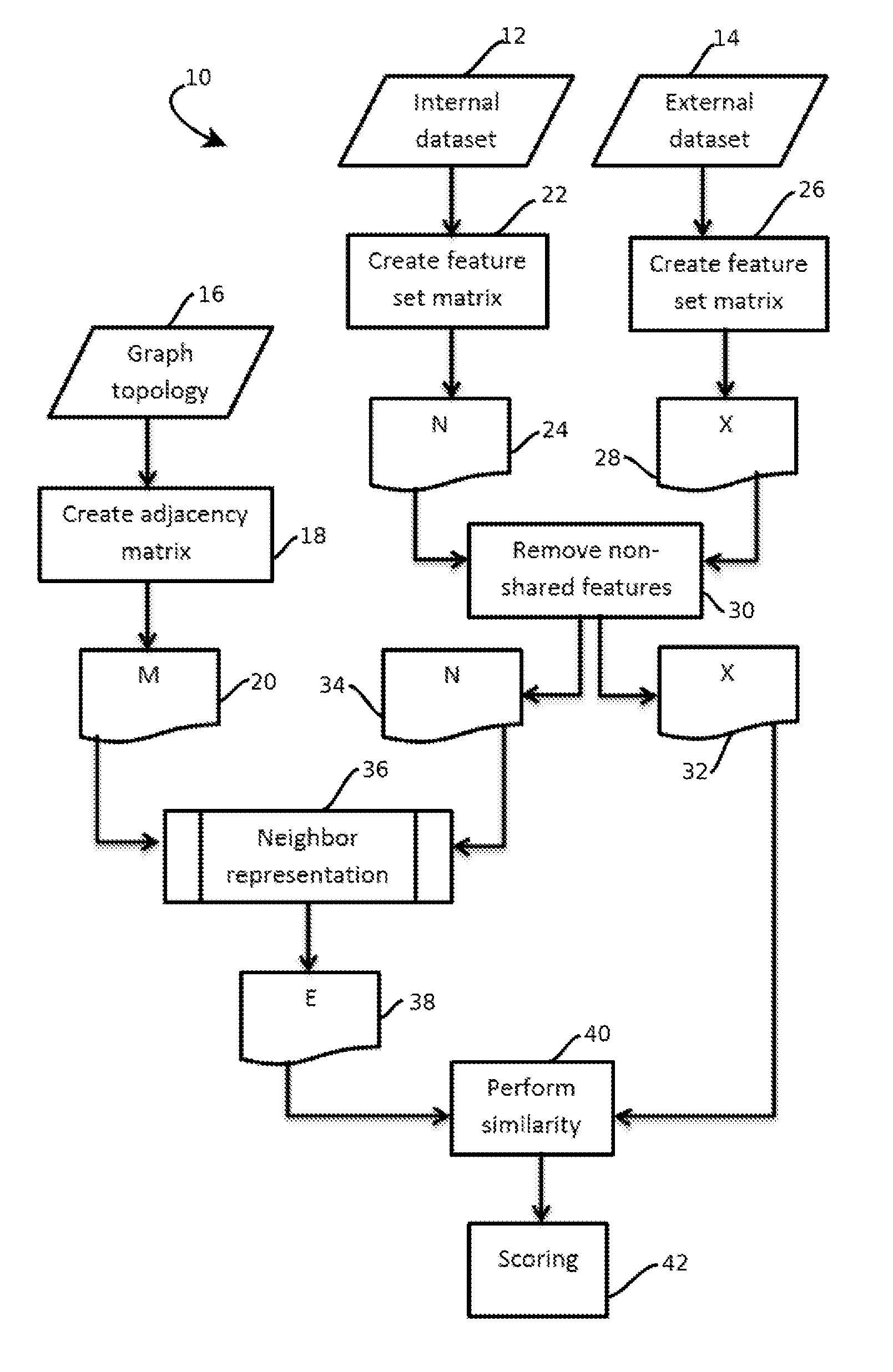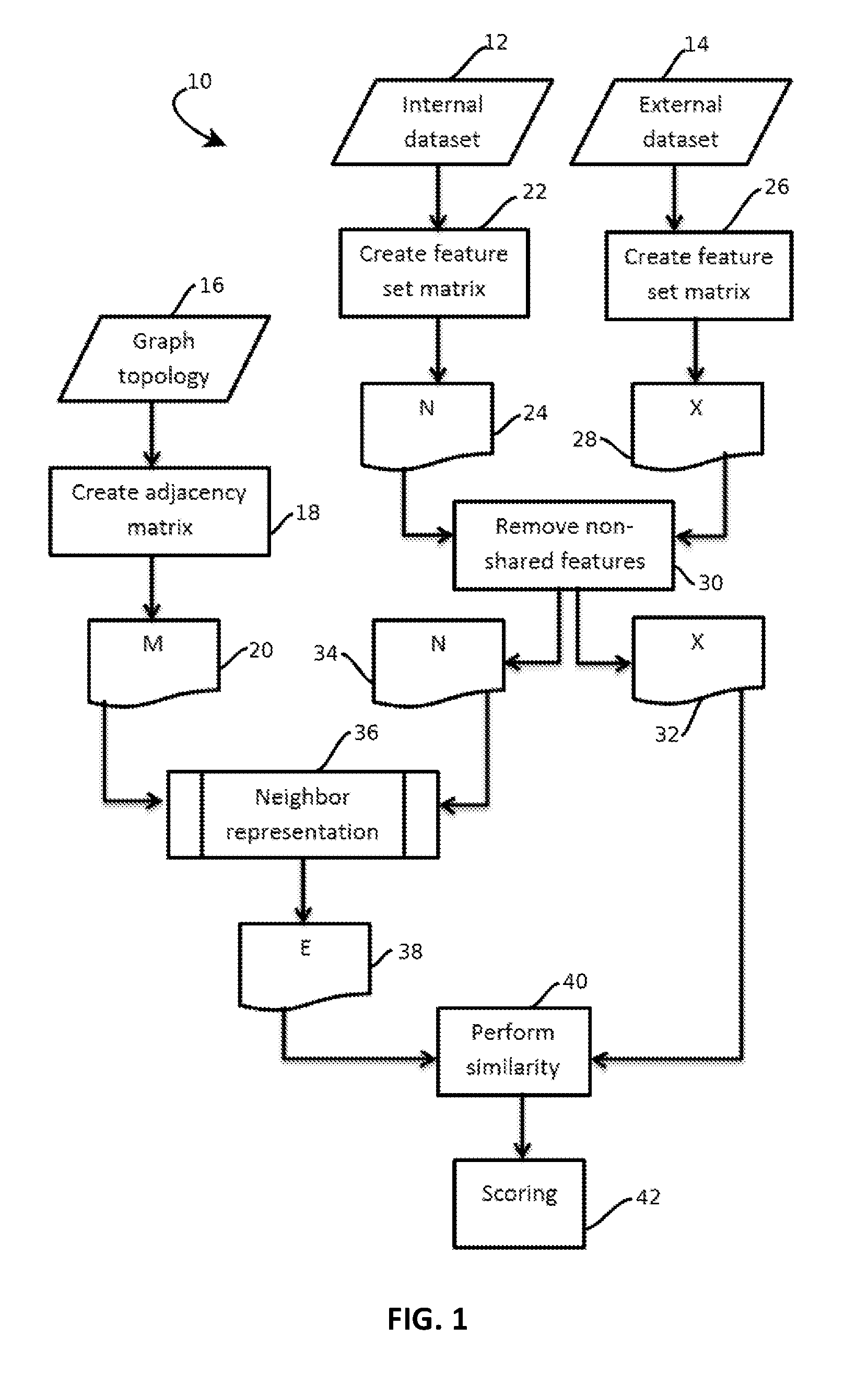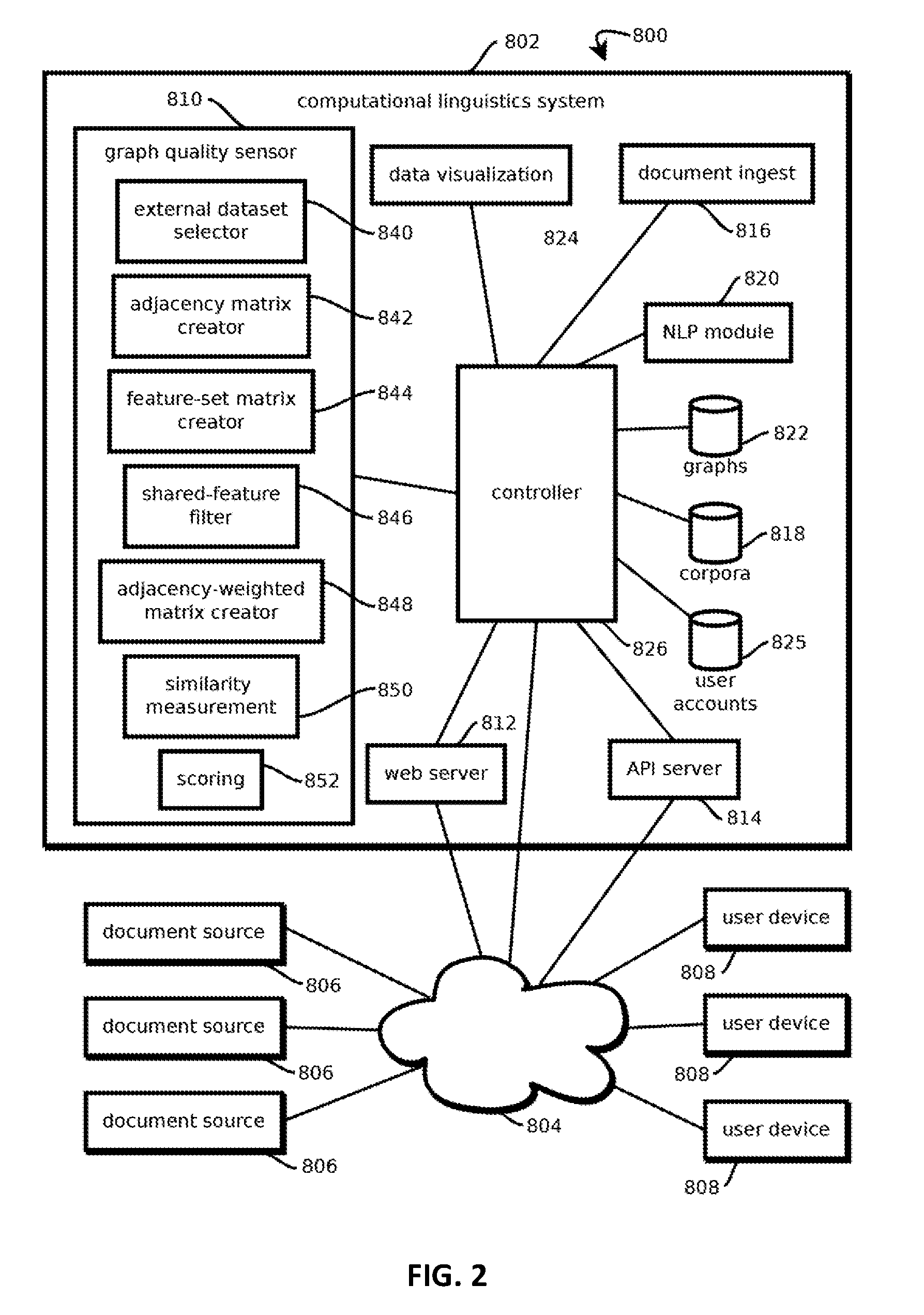Measuring accuracy of semantic graphs with exogenous datasets
a graph and dataset technology, applied in the field of computational linguistics, can solve problems such as difficult to gauge whether computer-implemented analyses are accurate, low-quality topics or documents, and inferences that would otherwise be impractical are potentially attainabl
- Summary
- Abstract
- Description
- Claims
- Application Information
AI Technical Summary
Benefits of technology
Problems solved by technology
Method used
Image
Examples
embodiment 1
2. The method of embodiment 1, wherein: the weighted edges are arranged as a semantic similarity matrix having rows and columns corresponding to each of the documents and values corresponding to the edge weights, the semantic similarity matrix being a symmetric matrix; an n-gram representation of the analyzed corpus is obtained and arranged as a first n-gram matrix comprising a plurality of vectors, each vector corresponding to one of the documents in the analyzed corpus, and each vector comprising a plurality of values indicating presence of a corresponding n-gram in the respective document; an n-gram representation of selected documents from the external corpus is obtained and arranged as a second n-gram matrix comprising a plurality of vectors, each vector corresponding to one of the documents in the external corpus, and each vector comprising a plurality of values indicating presence of a corresponding n-gram in the respective document; determining n-gram weights comprises: mult...
embodiment 3
4. The method of embodiment 3, wherein determining n-gram weights comprises: multiplying the first n-gram matrix by the semantic similarity matrix to produce a third n-gram matrix.
embodiment 4
5. The method of embodiment 4, wherein scoring semantic similarity relative to the external corpus comprises: selecting a vector in the third n-gram matrix and a vector in the second n-gram matrix; and performing steps for determining similarity between the selected vectors.
6. The method of any of embodiments 1-5, wherein selecting one or more documents from the external corpus that are associated with the adjacent node comprises: extracting an entity mentioned in the document corresponding to the adjacent node from the unstructured text of the document corresponding to the adjacent node; selecting the one or more documents from the external corpus based on the extracted entity.
7. The method of any of embodiments 1-6, wherein selecting the one or more documents based on the extracted entity comprises: accessing an index of topics of documents in the external corpus to identify a document about the entity; and retrieving data indicative of n-grams of the document about the entity fro...
PUM
 Login to View More
Login to View More Abstract
Description
Claims
Application Information
 Login to View More
Login to View More - R&D
- Intellectual Property
- Life Sciences
- Materials
- Tech Scout
- Unparalleled Data Quality
- Higher Quality Content
- 60% Fewer Hallucinations
Browse by: Latest US Patents, China's latest patents, Technical Efficacy Thesaurus, Application Domain, Technology Topic, Popular Technical Reports.
© 2025 PatSnap. All rights reserved.Legal|Privacy policy|Modern Slavery Act Transparency Statement|Sitemap|About US| Contact US: help@patsnap.com



